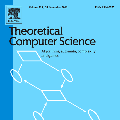The literature about tradable credit schemes (TCS) as a demand management system alleviating congestion flourished in the past decade. Most proposed formulations are based on static models and thus do not account for the congestion dynamics. This paper considers elastic demand and implements a TCS to foster modal shift by restricting the number of cars allowed in the network over the day. A trip-based Macroscopic Fundamental Diagram (MFD) model represents the traffic dynamics at the whole urban scale. We assume the users have different OD pairs and choose between driving their car or riding the transit following a logit model. We aim to compute the modal shares and credit price at equilibrium under TCS. The travel times are linearized with respect to the modal shares to improve the convergence. We then present a method to find the credit charge minimizing the total travel time alone or combined with the carbon emission. The proposed methodology is illustrated with a typical demand profile from 7:00 to 10:00 for Lyon Metropolis. We show that traffic dynamics and trip heterogeneity matter when deriving the modal equilibrium under a TCS. A method is described to compute the linearization of the travel times and compared against a classical descend method (MSA). The proposed linearization is a promising tool to circumvent the complexity of the implicit formulation of the trip-based MFD. Under an optimized TCS, the total travel time decreases by 17% and the carbon emission by 45% by increasing the PT share by 24 points.
翻译:有关可交易信贷计划(TCS)的文献是过去十年来大量涌现的一种需求管理系统,可以缓解拥堵现象。大多数拟议的配方是以静态模式为基础的,因此不考虑拥堵动态。本文考虑弹性需求,并采用TCS,通过限制网络当天允许的汽车数量促进模式转变。基于旅行的宏观基本图(MFD)模型代表整个城市规模的交通动态。我们假设用户有不同的OD配对,在驾驶汽车或乘坐交通时选择使用对调模式。我们的目标是根据TCS在平衡的基础上计算模式份额和信用价格。旅行时间是按模式份额的线性调整的,以改善汇合。我们然后提出一种方法来找到信用收费最大限度地减少全程旅行时间或与碳排放相结合的方法。我们假定用户有不同的OD配对,并选择在使用对调模式模式模式后驾驶汽车或驾车的交通中选择。我们打算用一种方法,即根据TCSA计算模式计算模式份额和信用价格价格的平衡。一种方法是计算45个模式份额的线性调整。旅行的线性调整,根据一种稳定的旅行的周期性调整方式将旅行的递增至递增速度,而采用一种典型的节制的节制的节率。根据一种递增的节率进行递增的节制的行程。



